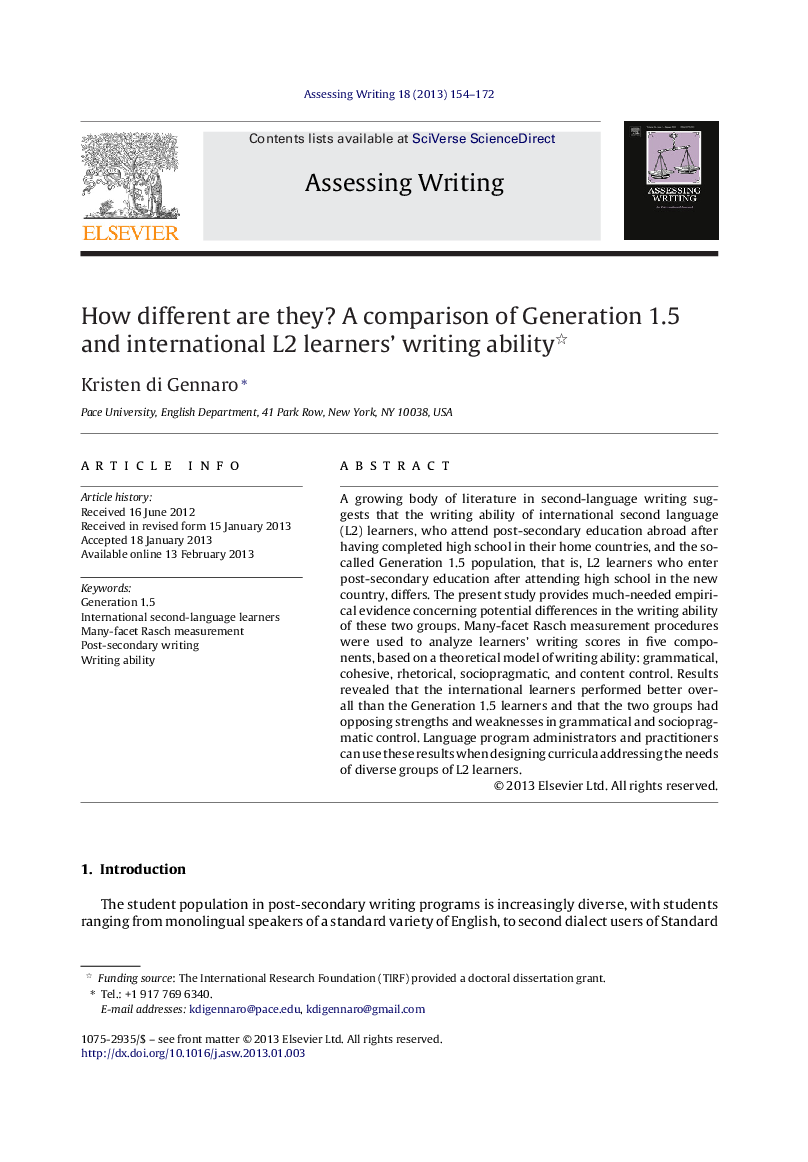| Article ID | Journal | Published Year | Pages | File Type |
|---|---|---|---|---|
| 344336 | Assessing Writing | 2013 | 19 Pages |
A growing body of literature in second-language writing suggests that the writing ability of international second language (L2) learners, who attend post-secondary education abroad after having completed high school in their home countries, and the so-called Generation 1.5 population, that is, L2 learners who enter post-secondary education after attending high school in the new country, differs. The present study provides much-needed empirical evidence concerning potential differences in the writing ability of these two groups. Many-facet Rasch measurement procedures were used to analyze learners’ writing scores in five components, based on a theoretical model of writing ability: grammatical, cohesive, rhetorical, sociopragmatic, and content control. Results revealed that the international learners performed better overall than the Generation 1.5 learners and that the two groups had opposing strengths and weaknesses in grammatical and sociopragmatic control. Language program administrators and practitioners can use these results when designing curricula addressing the needs of diverse groups of L2 learners.
► Writing ability of Generation 1.5 and international L2 learners was compared. ► International L2 learners performed better than Generation 1.5 learners. ► An interaction effect was found between groups and grammatical control. ► Findings suggest the two groups have different writing strengths and weaknesses.
